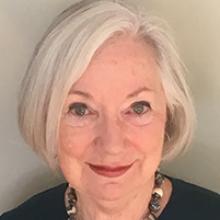Three Important Questions About Publicly Funded Preschools
Congress didn’t approve President Obama’s proposed $75 billion investment in quality preschool for all four-year-olds. But while the federal plan hasn’t happened, government-supported preschool is alive, recovering from the recession, and growing again at the state level. Preschool investment is increasing in large states, such as California and New York, and many more states are applying for $250 million in federal Preschool Development and Expansion Grants.
Policymakers should ask three central questions when considering preschool expansion:
1. What makes a preschool high quality, and does it matter? Longitudinal studies show that over the long term, child development programs improve school attendance, raise school achievement, and, ultimately, reduce juvenile crime. Children who participate make significant gains in language, math and science. But dramatic results have been found only for high quality programs, such as the Chicago Child Parent Centers and the Abbott Preschool Program in New Jersey, which feature teachers formally prepared to provide instruction in early education settings, classes of no more than 20 with at least one teacher and an associate teacher, parent involvement, and teachers paid what their K-6 counterparts make.
2. Should public funds for preschool be free to all 4-year-olds or limited to those from low-income families? Income-eligibility rules for federal- and state-funded preschool programs are often arbitrary; so many children whose families can’t afford a good quality private preschool can’t find spots for their children. Better planning is needed to ensure that quality programs reach the most disadvantaged children.
New Jersey’s Abbott Preschool Program offers one approach: providing free, high-quality preschool to ALL 4-year-olds in the state’s 31 poorest school districts, where about a quarter of the state’s preschool population lives. California’s 11,500 new preschool slots for low-income families will be available full-day, full-year for children of working parents for whom partial-day programs can be a logistical barrier.
To deliver either universal or targeted services, policymakers need better information to pinpoint localities with the greatest unmet need and to tailor school days and hours to families’ schedules. AIR’s work with First 5 California and its local county commissions, which support improving and expanding preschool, confirms the efficacy of allocating early care and education spaces in part by identifying the zip codes of greatest unmet need. This work also helps state and local policymakers track enrollment in preschool programs over time.
3. Is one year of preschool enough? For the most disadvantaged children, two years of preschool may be a far better investment than one. By fifth grade alums of the Abbott Preschool Program who had participated for two years had overcome roughly 20 to 40 percent of the achievement gap between minority and white students—twice the gains of those who participated for only one year.
In short, research affirms that investing in high quality preschool can help reduce taxpayer expenditures for far more expensive remedial education and even criminal incarceration down the road. But only high quality programs yield these dramatic results, and no amount of early education will compensate for poor quality elementary schools.
Susan Muenchow is a principal researcher at AIR specializing in early child development policy.
